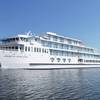Governors Write Obama for Mississippi River Funding
Governors seek President Obama’s support for upper Mississippi River commercial navigation locks and ecosystem
The Governors of the five Upper Mississippi River States of Illinois, Iowa, Minnesota, Missouri and Wisconsin are seeking President Obama’s support for critical investments in the Upper Mississippi River System as a nationally significant navigation system and a nationally significant ecosystem. In an August 20, 2014 joint letter to President Obama, the Governors expressed their ongoing commitment to the Navigation and Ecosystem Sustainability Program (NESP) authorized by Congress in 2007. NESP is an unprecedented, dual-purpose program that integrates lock capacity expansion and modernization (including seven new 1,200-foot lock chambers and several small-scale navigation efficiency measures) and ecosystem restoration efforts designed to improve the river’s ecological health.
The Governors requested the President’s support for funding to address the navigation system's longstanding infrastructure needs to ensure its capacity to relieve congestion on other parts of the nation’s multimodal transportation network. Such investments are necessary to increase the system’s reliability and efficiency, minimize safety risks, and stimulate market opportunities. In the joint letter, the Governors asserted that “the time is now to both address the navigation system’s longstanding needs and ensure its capacity to relieve congestion on other parts of our nation’s multimodal infrastructure.” These infrastructure investments would also allow the region to capitalize on the Panama Canal’s expansion. The Governors also requested comparable funding for ecological restoration efforts on the Upper Mississippi River System.
In the near term, the Governors are seeking funding to immediately construct small-scale navigation efficiency improvements; restoration projects that will provide tremendous ecological and economic benefits to the region; and planning for at least one new 1,200-foot lock chamber to begin modernizing the system. Congress authorized NESP to construct new 1,200-foot locks at Lock and Dams 20, 21, 22, 24 and 25 on the Upper Mississippi River and at La Grange and Peoria on the Illinois Waterway. The current 600-foot locks found at most Upper Mississippi dams require the modern 15-barge tow configuration to be split in two, dramatically increasing lockage times at the most congested locks lower on the system. The small-scale navigation efficiency projects authorized by Congress include such measures as switchboats at Locks 20-25; mooring cells at Locks 14, 22 and La Grange; and a guidewall extension at Lock 22 that will better assist operators in transiting the locks prior to completion of the new 1,200-foot locks. Congress also authorized NESP to include comparable ecological restoration funding to address the effects of the lock and dam system and related impacts. Habitat projects on the Upper Mississippi have proven to provide tremendous ecological and economic benefits by restoring the river’s natural ecological processes and improving its ability to support an array of human uses.
The Governors understand that the Midwest’s prosperity and quality of life depend upon the Mississippi River’s continuing viability as the commercial artery that moves a substantial portion of the nation’s agricultural exports to the Gulf of Mexico. Iowa Governor Terry Branstad stated that “The Upper Mississippi River is a thoroughfare for trade in this region. Today, it helps the nation compete in the global economy, with 78 percent of U.S. exports of corn and soybeans flowing to the world market via the Mississippi River.” The Upper Mississippi River System is also a rich and diverse ecosystem, a vital municipal and industrial water supply, and a tremendous recreational resource. Thus, the Governors and the federal government have a shared duty to ensure that the Upper Mississippi River System continues to function as a vital commercial transportation corridor ¾ connecting our states to the world economy ¾ and as a globally significant resource to support the river’s multiple uses.
umrba.org












